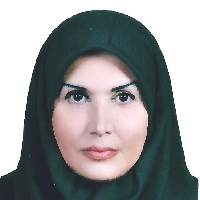Analyzing the Components of Urban Morphology Affecting Social Vulnerability Using the Meta-Analysis Method
Localization of development agency based on unique civilizational-cultural characteristics is one of the concerns and challenges facing urban planners in policy making in Iran. The purpose of this study is to extract and analyze those factors of urban morphology in local studies that have been evaluated as effective on social vulnerability in order to reach a clear definition of the dimensions, components and elements of each of them.
Based on the purpose, this research is applied-developmental, and with a quantitative approach, meta-analysis method has been used to extract the influential criteria and components of urban morphology on social vulnerability.
results show that urban morphology is influenced by the four aspects of: urban economy, transportation management and urban logistics, macro policies of horizontal and vertical development of the city and the urbanization paradigm. Social damage caused by urban form affected by land use management, roads geometry, type of texture in terms of wear and tear, geometry of filled and empty masses and creation of voids, transparency and readability of urban texture, vitality, accessibility and lighting of roads at night, the degree of realization of spatial justice It is for all sections of society and safety in the urban space during natural hazards such as floods and earthquakes.
The main approaches to the studies of the dimensions and components of urban morphology are physical, local-climatic, environmental perception and behavioral sciences, historical and geographical, economic-political, social sciences, humanities and cultural-contextual dimensions.
-
Examining the Impact of Seasonal Changes on Embodied Perception Capabilities and Behavior: A Case Study of Darakeh, Tehran
Saeed Sharifkazemi, *, Maryam Ghalambor Dezfuly
Bagh-e Nazar, May 2025 -
Traditional Neighborhood Development (TND) Based On Local Schools of Urban Planning Using Two Analytical Methods, TOPSIS and Multiple Regression (Case Study: Tabriz School of Urban Planning)
Morteza Lotfipour Siahkalroudi, Zahrasadat Saeideh Zarabadi*, Mostafa Behzadfar,
Journal of Life Space, -
Evaluating the Key Components of Spatial Justice with the Concept of Foucault's Disciplinary Power: A case study of Rasht city
Mona Ebrahim Parvar, Hamid Majedi *,
Geographical Urban Planning Research, -
Conceptualization of vitality on the scale of urban space; Development of a dynamic conceptual model
Emad Shamsollah, Hamid Majedi *,
,



